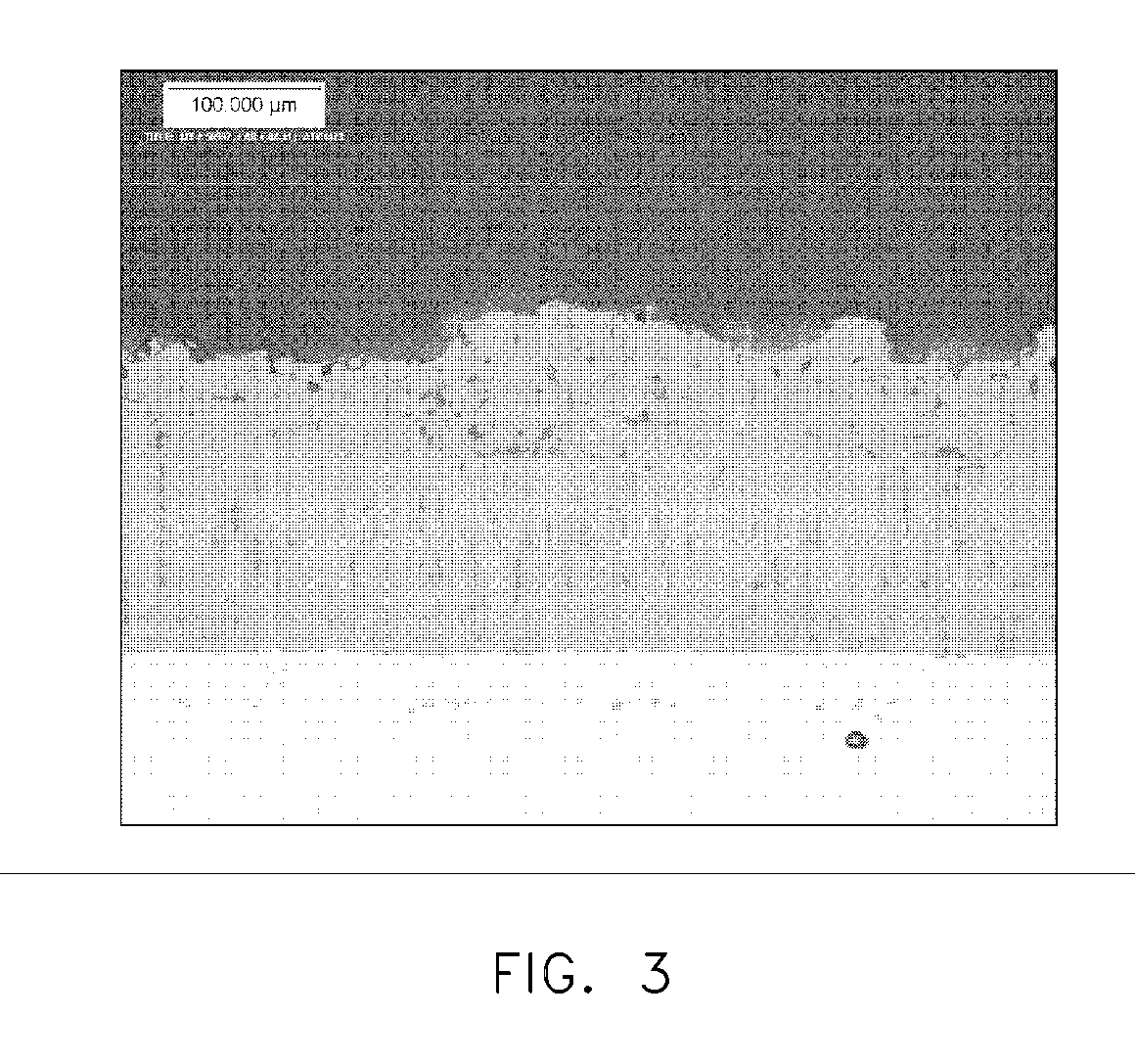Thermal barrier coating system and process therefor
a technology of thermal barrier coating and coating system, which is applied in the direction of superimposed coating process, machine/engine, natural mineral layered products, etc., can solve the problems of platform cracking, difficult air cooling of blade platforms, and particularly demanding requirements, so as to reduce detrimental temperature gradients within components and reduce temperatures on the component surfa
- Summary
- Abstract
- Description
- Claims
- Application Information
AI Technical Summary
Benefits of technology
Problems solved by technology
Method used
Image
Examples
Embodiment Construction
[0014] The present invention is generally applicable to components subjected to high temperatures, and particularly to components such as the high pressure turbine (HPT) blades and vanes of gas turbine engines. An example of an HPT blade 10 is shown in FIG. 1. The blade 10 has an airfoil 12, a dovetail 14 by which the blade 10 is anchored to a turbine disk (not shown), and a platform 16 therebetween. During operation of the gas turbine engine, the airfoil 12 and platform 16 are directly exposed to hot combustion gases. Significant cooling of the airfoil 12 is achieved by flowing bleed air through internal passages (not shown) within the blade 10. The bleed air exits the airfoil 12 through cooling holes 18 to transfer heat from the blade 10. While the advantages of this invention will be described with reference to components of a gas turbine engine, such as the high pressure turbine blade 10 shown in FIG. 1, the teachings of this invention are generally applicable to other component...
PUM
| Property | Measurement | Unit |
|---|---|---|
| thickness | aaaaa | aaaaa |
| thickness | aaaaa | aaaaa |
| thickness | aaaaa | aaaaa |
Abstract
Description
Claims
Application Information
 Login to View More
Login to View More - R&D
- Intellectual Property
- Life Sciences
- Materials
- Tech Scout
- Unparalleled Data Quality
- Higher Quality Content
- 60% Fewer Hallucinations
Browse by: Latest US Patents, China's latest patents, Technical Efficacy Thesaurus, Application Domain, Technology Topic, Popular Technical Reports.
© 2025 PatSnap. All rights reserved.Legal|Privacy policy|Modern Slavery Act Transparency Statement|Sitemap|About US| Contact US: help@patsnap.com



